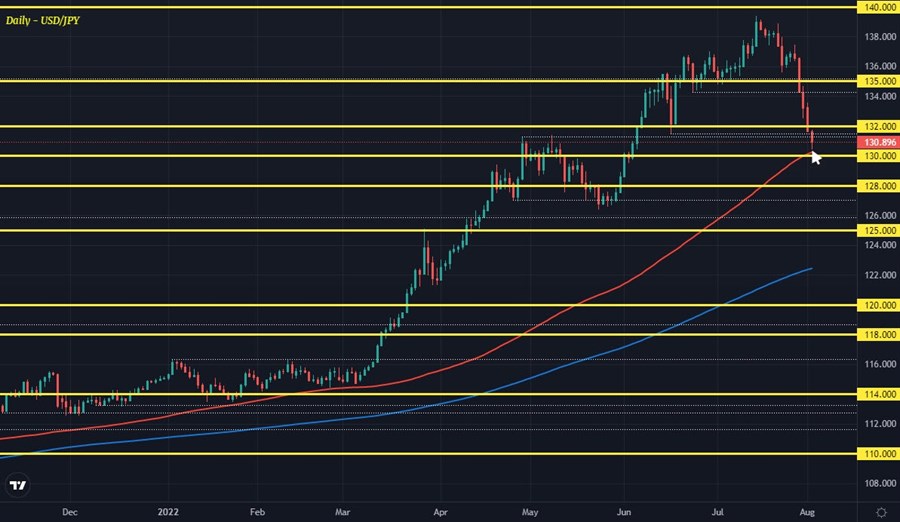Even prior to the focus in the past few sessions on Pelosi’s visit to Taiwan, the break lower in USD/JPY and Treasury yields was already taking shape since last week. The fact that markets are feeling apprehensive amid US-China tensions is also adding to the gravitational pull on both fronts.
I’ve put up these charts many a time since the Fed meeting and I’ll put them up again here as a reminder that we are seeing a shift in market sentiment after months of driving on the other side of the street. USD/JPY has been on a tear since March in a rally from 115.00 all the way towards 139.00 last month. But the break lower in the past few days is rather significant:
The pair is on course for a fifth consecutive daily decline, its first since the end of last year and has taken out some notable support levels on the way to targeting its 100-day moving average (red line) at 130.21 currently.
The subtle shift by the Fed last week is a key driver but that has also translated to a material move in the bond market. 10-year Treasury yields has fallen to its lowest in almost four months and has taken out its 100-day moving average (red line) as well as neckline support (white line) and the swing lows near 2.70%:
I can’t stress how big of a technical break that is but the fact that yields are continuing to freefall is a testament to the momentum in play at the moment.
Despite all the focus on US-China tensions today, central banks are still the main driver of markets for now and the RBA’s subtle shift today is also symbolic in the sense that it marks the next chapter in the tightening cycle. The BOE is up next on Thursday and then the focus will shift back towards the Fed outlook with US non-farm payrolls on Friday.
